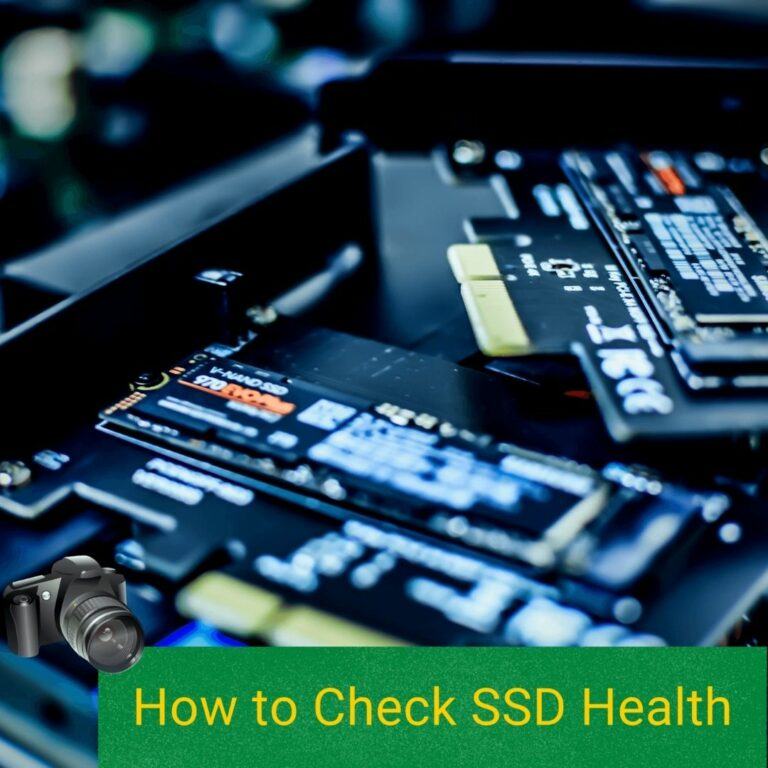

- CHECK SSD HEALTH MACOS HOW TO
- CHECK SSD HEALTH MACOS LICENSE
- CHECK SSD HEALTH MACOS PROFESSIONAL
- CHECK SSD HEALTH MACOS MAC
Launch Disk Drill (Finder > Applications).

To check your SSD’s S.M.A.R.T status using Disk Drill:

However, you can back up data from your failing drive using Disk Drill’s Byte-to-byte backup feature, which is completely free.
CHECK SSD HEALTH MACOS LICENSE
Note that you’ll have to pay for a license to access this feature (we vouch for its value).
CHECK SSD HEALTH MACOS MAC
To use it, launch Disk Utility (Finder > Applications > Utilities) and select your SSD from the left sidebar (drive not volume).Īnd if your drive’s deterioration has already caused some of your data to go missing, you can also use Disk Drill to recover your Mac SSD. reporting tool that provides basic information about your drive’s health status. Method #1: Using Disk Utilityĭisk Utility is a built-in macOS tool with a S.M.A.R.T.
CHECK SSD HEALTH MACOS HOW TO
Below are 2 completely free tools that we highly recommend for your Mac, as well as step-by-step instructions on how to use them. However, the only way a user can access this information is by using software. (Self-Monitoring, Analysis, and Reporting Technology) that logs wear level. Fortunately, all hard drives and solid state drives have a built-in function called S.M.A.R.T.
CHECK SSD HEALTH MACOS PROFESSIONAL
If you know your SSD’s wear level, you can secure your data before it’s destroyed to the point where only professional data recovery services can restore it. Wear leveling rearranges your data – in the process, it may overwrite important files. However, before you apply either algorithm, you may want to check your SSD’s wear levels to know if you need to secure your data first. But the tradeoff of this extra work is slower performance. This ensures that all cells have the same number of erase/write cycles on them. It does so by moving data that isn’t frequently updated to new cell blocks regularly. The key difference lies in how it treats unchanged data to resolve the problem of uneven wear leveling. This SSD wear leveling algorithm generally works in a similar manner. This ultimately leads to fewer erase/write cycles on that cell compared to others that are frequently written to. In dynamic wear leveling, the data stays on the same cell until you make further changes to it. Its only downside is the uneven wear leveling caused by the untouched data. Then, it’ll empty out and reserve the previous cell for future use. Every time you make changes to an existing file, this technique will save the updated data to a new cell. Most SSDs use either of the two basic types of wear leveling algorithms: In this way, SSD makes use of all available cells at ideally the same rate. Using a special algorithm, it keeps track of each cell’s write cycles and uses that to choose which cell to next store data. Wear Leveling is a technique SSDs use to distribute usage evenly among cells, prolonging the entire cabinet’s or hard drive’s lifespan as a result. This is what Wear Leveling your SSD is designed to work around. The cycle continues until the whole cabinet is too damaged to use. When you use a single drawer to store files over and over again, it wears down faster than its unused counterparts. Think of hard drives as file cabinets and the cells as individual drawers. This behavior decreases the SSD’s wear level – and as your SSD’s wear level gets worse, it will start to misbehave until it eventually stops working altogether. This rate of deterioration is referred to in percentage as “Wear Level” or “Wear Leveling Count (WLC).” Technically speaking, SSDs consist of storage blocks or “cells” that are being constantly reused each time we delete and save data. An SSD’s lifespan starts at 100% and decreases each time you erase, overwrite, or save data. Monitorĭo SSD drives wear out? Yes – the life of an SSD is finite. Method #2 Using Disk Drill’s Free S.M.A.R.T.


 0 kommentar(er)
0 kommentar(er)
